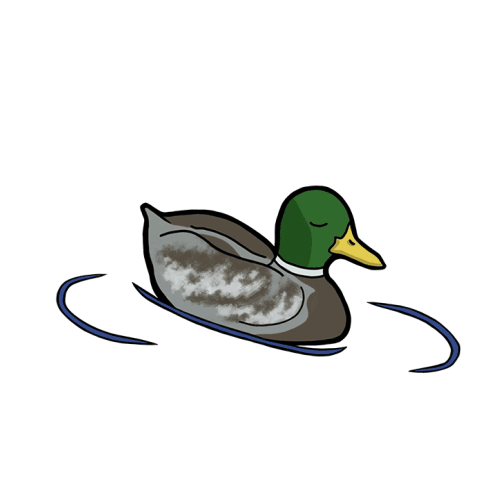Dawn-Hunter Strobel
Lifestyles editor
dsstrobel@willamette.edu
The women’s liberation movement of the ‘60s and ‘70s usually brings to mind images of bra burnings, calls for women to be defined outside of their association to men and protests of the Miss America beauty pageant. What doesn’t come to mind as easily are stories and images of working class women protesting in Appalachia.
Jessica Wilkerson, in her lecture “Lessons on Liberation: From Dolly Parton to Appalachian Feminism,” argues that working class Appalachian women’s contribution to the women’s liberation movement should not be underestimated. Wilkerson visited Willamette on March 5 as part of the Frost Lecture Series, put on by the History Department.
Wilkerson, an assistant professor of history at the University of Mississippi, grew up in eastern Tennessee, 20 miles from Dollywood, the Dolly Parton-themed amusement park. Dollywood is a place dedicated to a beloved figure who is seen as representing eastern Tennessee; Wilkerson described a childhood where she was taught to love Parton.
But as she grew up, Wilkerson became more skeptical of the role Parton played in the economy and larger culture of the South. Once she became a historian, she asked herself, “How do I bring my training as a historian to that brand of Dolly Parton I grew up around?”
Wilkerson noted that Parton is seen as a champion of women’s rights and, more recently, of LGBTQ+ rights, but argued that she has done little to deserve those labels. Wilkerson argued that Parton tells stories of a working-class woman and people read it as feminism, whether it is truly feminist or not.
Some of this also comes from Parton’s carefully curated aesthetic that some could read as being close to drag. Wilkerson called it “a working-class critique of the stereotypical idea of white middle-class femininity,” and referenced a Parton quote where she described her style as “a blend of Mother Goose, Cinderella and the local hooker.” Because of this exaggerated look, Parton has been picked up by queer communities and heralded as, even in aesthetics alone, a queer icon.
Wilkerson went on to highlight times when Parton said that she believes feminists went too far during the ‘60s and ‘70s. Wilkerson also noted how poorly paid Dollywood workers are. Wilkerson ended her lecture’s section about Parton by saying, “Feminism that Parton represents is not the feminism that will help working class women in Appalachia and the U.S.”
To counter this very visible but seemingly insincere figure, Wilkerson offered stories of real Appalachian feminists who were fighting in the ‘60s and ‘70s but who are often overlooked.
Wilkerson noted a few prominent figures such as Eula Hall, Bessie Smith Gayheart, Bessie Cornette and Sudie Crusenberry, then outlined how they approached their activism. Overwhelmingly among activists in Appalachia, their platforms stemmed from their roles as caretakers and relied heavily on concepts of caring labor. Caring labor is the labor that has historically fallen to women: caring for children, the elderly, the sick, people with disabilities and so on.
It is important to note that this caring labor was deeply intertwined with their positions as working class women, so caring labor looked very little like the middle class, stay-at-home wife that is common in conceptions of what caretaking looks like.
Instead, these women’s care labor was tied up in their husbands’ work in mines. Mines are incredibly dangerous places to work, and at this time, black lung disease was common.
The feminism of Appalachian women was one centered around issues of labor and class, and their approaches mirrored that.
Wilkerson said, “Women articulated a politics of care built on an understanding of women’s caregiving.” Women joined the labor movement and called for unionizing the mines, because unionized mines would mean fewer husbands with black lung disease, which in turn meant the women’s jobs as caregivers would be easier.
It is because of this platform rooted in care labor that Appalachian feminism is often written off. Wilkerson noted that when she approaches Appalachian feminism, she doesn’t look at it through the lens of a certain ideology, but rather considers what their actions said about what was important to them. What they did, she noted, “was not always called women’s rights or feminism” but these women “saw the coal strike as much as a woman’s issue as a labor issue.”
Wilkerson read out quotes of women who actively claimed their efforts to be part of the larger liberation movement and noted that Appalachian women challenged a host of gender norms in the process of their protests. It was only once women showed up at the picket line that they began to wear pants instead of their traditional dresses.
Once the union struggle was won, women went on to demand allowance to work in the mines. Once they were allowed, they immediately began to change the workplace by speaking out for things like family leave policies. The family leave policy that they pushed for and eventually passed in 1996 is still the law that is in use today.
Many of the same women who were in the picket lines also went on to join a number of other causes, including setting up rural health clinics that are still in use to this day, currently in use to combat the opioid crisis. Many women also went on to join the fight against the rise of the KKK and were frequently harassed by KKK members.
Wilkerson projected a collage of photos of the women she highlighted: standing in picket lines and holding up billboards, photos of anti-capitalist song lyrics these women wrote as well as photos of the women in coal miner gear, working in the mines. Reinforced by the images on the screen, she ended the lecture by saying, “Appalachian activists stood at the nexus of 20th century activism.”

Comments